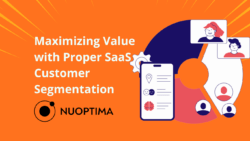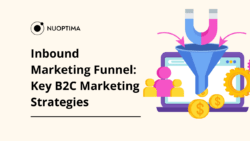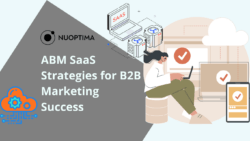Introduction
As the online software market is projected to reach over $232 billion by 2024 [1], the role of SaaS social media marketing in driving growth and engagement has never been more crucial. This article is designed to provide you with targeted social media strategies to capitalize on this growth.
We’ll cover key areas such as audience engagement, platform selection, and effective content creation, all tailored for the SaaS industry. There are even actionable insights for building a strong online presence, enhancing brand loyalty, and fostering customer relationships. By the end of this read, you’ll have a clear, practical roadmap for leveraging social media to elevate your SaaS business in a competitive and evolving market.
Understanding Your Audience
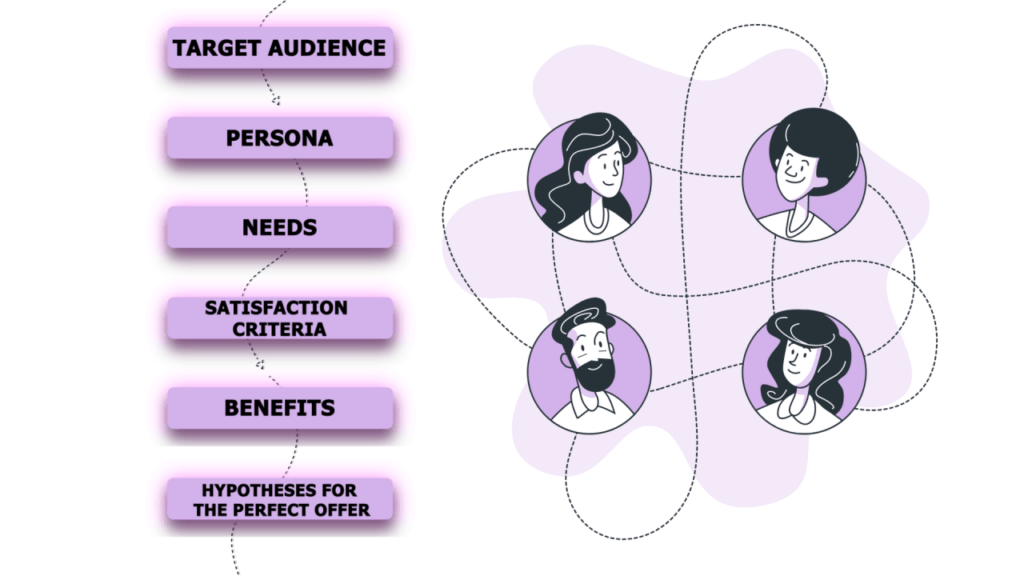
For SaaS businesses, the cornerstone of any successful social media marketing campaign lies in a deep understanding of the target audience. Knowing who your subscribers are, what they need, and how they interact online is essential. This understanding not only shapes the content and messaging but also determines the most effective channels for distribution.
Strategies for Audience Research
Below are some of the strategies you can adopt for comprehensive audience research:
- Demographic Analysis: Start by gathering basic demographic information such as age, location, job title, and industry. This data can often be sourced from existing customer databases or tools like Google Analytics.
- Psychographic Segmentation: Beyond basic demographics, delve into the psychographics of your audience. This includes understanding the challenges, pain points, aspirations, and motivations. Surveys, user feedback, and social media listening tools can be invaluable for this.
- Customer Personas: Develop detailed customer personas that represent your typical users. These personas should encapsulate both demographic and psychographic characteristics. They serve as a reference point for creating targeted content and campaigns.
- Social Media Analytics: Utilize the analytics provided by social media platforms. These tools offer insights into the behavior, preferences, and engagement patterns of your audience on each platform.
- Competitor Analysis: Observe how similar audiences interact with competitors’ social media. This can provide clues about content preferences, effective messaging, and potential gaps in the competitors’ strategies.
Segmentation for Tailored Messaging
Once you have a thorough understanding of your audience, the next step is segmentation. This involves dividing into smaller, more manageable groups based on shared characteristics. Effective segmentation allows for more personalized and relevant messaging, which is crucial in the crowded SaaS market.
- Behavioral Segmentation: Group based on their behavior, such as usage patterns of your SaaS product, past purchases, or engagement with previous marketing campaigns.
- Needs-Based Segmentation: Segment according to their specific needs and challenges. This approach ensures that the content and solutions you offer resonate more deeply with each group.
- Engagement Level Segmentation: Differentiate between highly engaged users and those with minimal interaction. Tailor your messaging to nurture the less engaged segments while providing value to the active ones.
Setting Clear Goals and Objectives
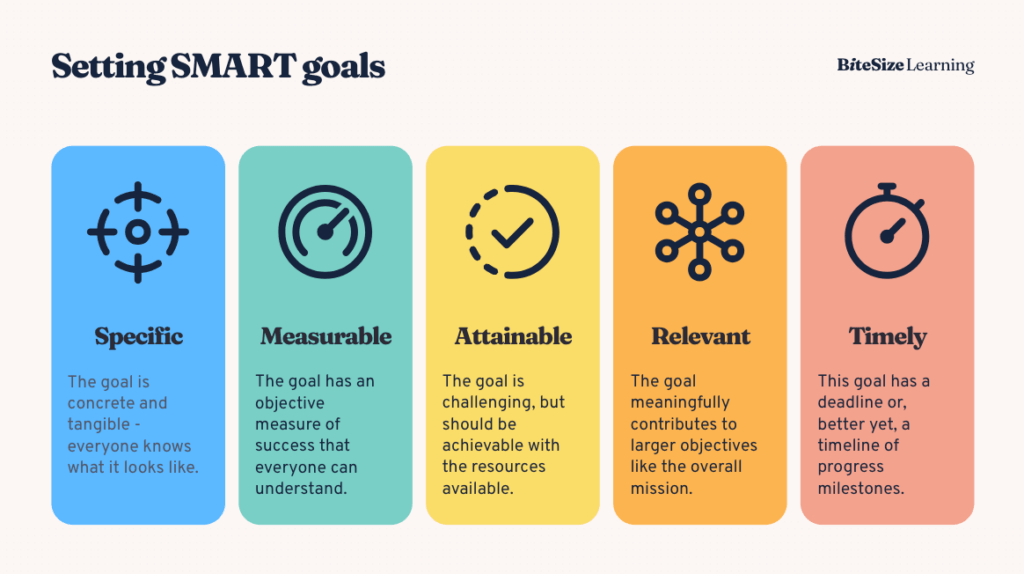
In the context of social media marketing for SaaS, the establishment of clear, well-defined goals is a requirement for success. This section emphasizes the importance of setting goals that are Specific, Measurable, Achievable, Relevant, and Time-bound (SMART). These criteria ensure that objectives are clear and actionable.
Here is a clear breakdown:
- Specific: Goals should be clear and straightforward to avoid ambiguity. This involves answering the what, why, and how of your objectives.
- Measurable: Establish criteria for measuring progress. This makes it possible to track the effectiveness of your strategies and make necessary adjustments.
- Achievable: While goals should be challenging, they must also be attainable. Unrealistic goals can be demotivating and counterproductive.
- Relevant: Ensure that the goals are aligned with the overall business objectives and are pertinent to the growth and success of the SaaS company.
- Time-bound: Assign a deadline to each goal. This helps in maintaining focus and creating a sense of urgency.
Common Social Media Marketing Goals for SaaS Companies
By setting SMART goals and focusing on these common objectives, SaaS companies can create a structured and effective social media marketing strategy. This approach not only streamlines efforts but also provides a clear roadmap for measuring success and ROI, which is crucial for any SaaS business looking to make a significant impact in the digital space.
| Goal | Description | Measurement Metrics |
| Increase Brand Awareness | Enhance visibility and recognition of the SaaS product in the market. | Followers count, impressions, shares, and mentions. |
| Drive Website Traffic | Use social media platforms to direct more users to the company’s website. | Click-through rates and website traffic analytics. |
| Generate Leads | Convert social media engagement into potential leads for the SaaS product. | Number of leads generated and conversion rate. |
| Boost Customer Engagement | Foster a higher level of interaction with current and potential customers. | Comments, likes, direct messages, and engagement rate. |
| Enhance Customer Support | Utilize social media as a tool for providing effective customer service. | Response time and customer satisfaction scores. |
| Increase Sales and Revenue | Directly use social media marketing efforts to drive sales of the SaaS product. | Sales figures and revenue attributed to social media. |
| Build a Community | Create a loyal community around the SaaS product, enhancing customer retention and advocacy. | Community size, active participation, and user-generated content. |
| Improve Product Feedback Loop | Use social media as a channel to gather feedback on the product for continuous improvement. | Number of feedback instances and quality of feedback. |
Choosing the Right Social Media Platforms

The effectiveness of your social media marketing hinges significantly on choosing the right platforms. This decision should be informed by an understanding of each platform’s user demographics, content strengths, and alignment with your marketing objectives.
Evaluating Platform Suitability
Below is a table of popular social media platforms, focusing on their demographics, strengths, content types, and overall suitability for SaaS marketing (ranked from high, moderate, to low).
| Platform | Demographics | Strengths | Content Types | Suitability |
| Predominantly professionals across various industries. | Ideal for B2B marketing, lead generation, and thought leadership. | Articles, company updates, professional achievements, and industry news. | High. Aligns well with the B2B SaaS audience. |
|
| X (Formerly Twitter) | Broad user base, skewed towards younger, tech-savvy individuals. | Real-time communication, brand personality, and customer service. | Short updates, news, quick tips, and customer interactions. | Moderate to high. Good for brand awareness and engagement. |
| Diverse, with a slight lean towards the older demographic. | Community building, brand storytelling, and targeted advertising. | Various, including posts, videos, and customer stories. | Moderate. Versatile, better for B2C SaaS. |
|
| Predominantly younger audiences, visual content preference. | High engagement, visual storytelling, and influencer marketing. | High-quality images, videos, stories, and Reels. | Moderate. Suited for B2C SaaS and company culture showcase. |
|
| YouTube | Wide-ranging, users seeking educational/entertainment content. | Video marketing, tutorials, product demos, and thought leadership. | Long-form videos, how-to guides, product demos. | High. Excellent for product demonstrations and education. |
| Tech-savvy individuals seeking in-depth information. | Niche marketing, community engagement, and direct feedback. | Text posts, AMAs, discussions. | Moderate. Effective for targeted niche marketing and community building. |
Tips for Selecting Platforms
In the quest to maximize the impact of your SaaS social media marketing, it’s crucial to make strategic decisions about which platforms to use. The key considerations include:
- Align With Your Audience: Choose platforms where your target audience is most active. For B2B SaaS, LinkedIn and X are often more effective, while B2C SaaS might find more success on Facebook and Instagram.
- Consider Your Content Type: Align your platform choice with the type of content you produce. Visual products might perform better on Instagram or YouTube, while service-oriented SaaS might benefit from LinkedIn’s professional network.
- Resource Allocation: Assess the resources available for managing these platforms. Some platforms require more consistent engagement and content creation than others.
- Competitor Presence: Analyze where your competitors are most active and successful. This can provide insights into where the audience may be most receptive.
- Experiment and Adapt: Be open to experimenting with different platforms and adapt based on the performance and engagement metrics.
Crafting Engaging and Relevant Content

Having a SaaS content strategy that connects with the specific needs, challenges, and interests of your audience can significantly elevate your brand’s relevance and appeal. For tech businesses, this means developing material that not only captures attention but also provides real value to the audience.
The optimal content types to consider include:
- Case Studies: These provide tangible evidence of the effectiveness of your SaaS product. By showcasing real-world applications and results, case studies help potential customers visualize the impact your solution can have on their own challenges.
- Product Demonstrations: Video or interactive demos that illustrate how your software works can be highly effective. They help demystify your product and show its practical utility in a clear, engaging manner.
- Thought Leadership Articles: Publishing insightful articles on current trends, future predictions, or industry challenges positions your brand as a knowledgeable leader in the SaaS field. This type of content not only informs but also builds trust with your audience.
- Educational Content: Guides, tutorials, and webinars that educate your audience about your niche or how to maximize the use of your product can be extremely valuable. This type of content positions your brand as a helpful resource, fostering loyalty and long-term engagement.
- User-Generated Content: Encouraging and posting content created by your subscribers, such as reviews or testimonials, can enhance credibility and provide social proof.
- Interactive Content: Polls, quizzes, and interactive infographics can increase engagement and provide valuable insights into your audience’s preferences and behaviors.
The secret to a successful content strategy lies in striking the right balance between promotional and educational content. While promotional content is necessary to drive sales and SaaS conversion rates, educational content is crucial for building relationships and establishing trust with your audience.
A good rule of thumb is to follow the 80/20 rule: 80% of your content should inform, educate, or entertain your audience, while only 20% should directly promote your products or services. This approach assures that your social media presence is not overly sales-oriented but focused on providing value to your audience.
Leveraging Social Media Advertising
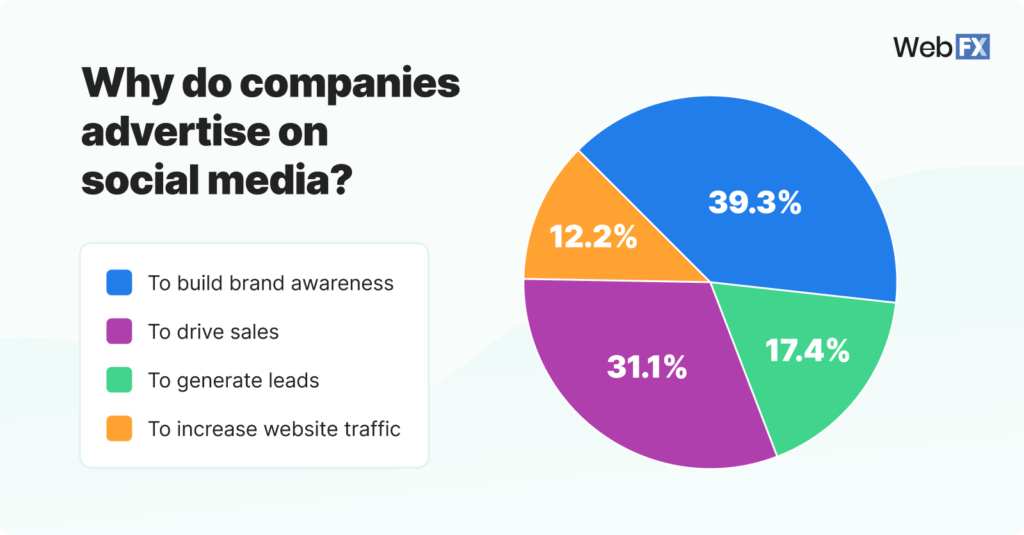
As also discussed earlier, utilize platform-specific targeting features to reach your ideal customer profile. This includes targeting based on demographics, interests, and behaviors and even retargeting those who have interacted with your website or app.
Budget Allocation
Set your budget based on your marketing objectives and the average cost-per-click (CPC) or cost-per-impression (CPM) on the chosen platform. It’s often wise to start with a smaller budget to test the effectiveness of your ads before scaling up.
Performance Monitoring
Continually monitor the performance of your ads using key B2B SaaS metrics such as click-through rate (CTR), conversion rate, and return on ad spend (ROAS). Use these insights to adjust your strategy and budget allocation for optimal results.
Utilizing Tools and Automation

Social media management, particularly for SaaS businesses, demands a strategic approach to scheduling, analytics, and content curation. Here, we will delve into the various tools that can provide insights into optimizing social media efforts.
Tools for Scheduling
Scheduling tools are necessary for maintaining a consistent and timely presence on social media platforms. They allow for the planning and automatic posting of content, ensuring that audiences are engaged even outside of standard working hours.
| Tool Name | Key Features | Platform Compatibility |
| Hootsuite | Comprehensive dashboard, bulk scheduling, social media calendar | X, Facebook, LinkedIn, Instagram |
| Buffer | User-friendly interface, optimal timing suggestions, analytics integration | X, Facebook, LinkedIn, Instagram, Pinterest |
| Later | Visual content calendar, link-in-bio feature, hashtag suggestions | Instagram, X, Facebook, Pinterest |
Tools for Analytics
Analytics tools provide the insights needed to understand audience behavior, measure engagement, and refine their strategies. Given below are some of our favorites for data analysis.
| Tool Name | Key Features | Analytics Focus |
| Sprout Social | Detailed reporting, competitor analysis, audience demographics | Engagement, reach, audience growth |
| Google Analytics | Website traffic tracking, user behavior analysis, conversion tracking | Website referrals, campaign performance |
| Socialbakers | AI-driven insights, audience segmentation, performance benchmarking | Content effectiveness, audience preferences, competitive analysis |
Tools for Content Curation
Curation tools assist in discovering and organizing relevant content that resonates with the target audience, saving time and enhancing the quality of the material shared.
| Tool Name | Key Features | Content Focus |
| Feedly | RSS feed aggregation, AI-driven recommendations, team collaboration features | Industry news, trends, influencer content |
| Curata | Content discovery engine, custom content recommendations, easy republishing | Blogs, news articles, videos |
| Save-for-later feature, content discovery based on interests, tagging system | Articles, videos, stories |
Measuring and Analyzing Performance

The measurement and analysis of performance are pivotal for understanding the impact of marketing efforts and for guiding future strategies. Below, we look at the key metrics that all SaaS businesses should monitor.
- Engagement Rate: This includes likes, comments, shares, and clicks. High engagement rates often indicate content relevance and audience interest.
- Conversion Rate: The percentage of social media interactions leading to desired actions, such as sign-ups or software trials. This metric is crucial for evaluating the ROI of social media campaigns.
- Follower Growth: Tracking the rate of new followers helps assess brand reach and the effectiveness of audience growth strategies.
- CTR: The ratio of users who click on a link to the number of total users who view a post. A high CTR suggests that content is compelling enough to prompt action.
- Bounce Rate: The percentage of visitors who move away from your site after viewing only one page. A high bounce number can indicate that the landing page content is not meeting user expectations.
- CAC (Customer Acquisition Cost): The cost associated with acquiring a new customer through social media channels. This metric is vital for budget allocation and marketing cost analysis.
- CLV (Customer Lifetime Value): An estimate of the total value a customer brings over their lifetime. Understanding CLV in relation to CAC can guide sustainable SaaS marketing strategies.
Using Analytics for Strategy Refinement
Analytics isn’t just about numbers; it’s about insights that shape future strategies. Here, we’ll explore how to interpret your social media analytics effectively.
- Identifying High-Performing Content: By analyzing which types of posts garner the most engagement and conversions, marketers can tailor their content strategy to replicate successful elements.
- Optimizing Posting Schedule: Analytics can reveal the times when audiences are most active, allowing for scheduling posts for maximum visibility and engagement.
- ROI Analysis: By correlating social media metrics with revenue data, businesses can assess the direct financial impact of their social media activities.
- Sentiment Analysis: Understanding the sentiment behind social interactions can help in gauging brand perception and proactively addressing any potential issues.
Building Community and Engagement

Building a community on social media is more than just accumulating followers. It’s about creating a space where meaningful interactions occur and where your audience feels valued and heard.
This involves a few key strategies:
- Content That Resonates: Share content that speaks directly to the interests and requirements of your target users. This could include industry insights, user-generated content, and behind-the-scenes glimpses of your company.
- Regular Engagement: Respond promptly to comments, messages, and mentions. Regular interaction not only boosts your visibility but also shows that you value your audience’s input.
- Community-Driven Initiatives: Host Q&A sessions, webinars, or live discussions on topics relevant to your audience. Encourage user participation through polls, surveys, and contests.
- Collaborations and Partnerships: Partner with influencers or other businesses in your niche. It helps expose your brand to a broader audience and adds value to your community.
- Exclusive Offers: Provide your social media community with exclusive access to beta tests, discounts, or early product releases. This fosters a sense of exclusivity and appreciation among your followers.
Importance of Customer Feedback and Interaction
Engaging with customer feedback is a cornerstone of building brand loyalty in the SaaS sector. When customers see that their feedback is acknowledged and acted upon, it cultivates trust and credibility in your brand. This transparency is a clear indication of your commitment to continuous improvement.
Customer feedback is also invaluable for product development, offering insights into user experiences and desired improvements. This can guide your product development to better meet user needs. Furthermore, addressing client feedback and interactions can significantly enhance retention. It shows that you value their experience and are dedicated to providing solutions that meet their evolving needs.
In essence, the integration of customer feedback into your social media strategy is not just about resolving issues; it’s about building lasting relationships and a loyal customer base, leading to an online community for your software brand.
To learn more about effective sales strategies and communication tools, listen to the Nuoptima SaaS Podcast featuring Chris Baden from FlowChat.
Case Studies and Success Stories
By learning from other SaaS platforms, you can craft more effective and impactful social media marketing strategies for yourself. Here, we delve into three real-world examples of successful case studies, highlighting the methods employed and the lessons learned.
1. Slack’s Community Building Approach

Slack is a popular collaboration tool that has managed to leverage social media to build a community around its brand. By engaging with users on platforms like X and LinkedIn, Slack created a space for customer feedback, product tips, and industry discussions. Their approach was not just about promoting their product but also about fostering a sense of belonging among users.

Lessons Learned
The key takeaway from Slack’s strategy is the importance of community engagement. By focusing on building relationships rather than just pushing a product, Slack was able to create a loyal user base. This approach also provided valuable insights into user needs, shaping product development.
2. HubSpot’s Educational Content Strategy

HubSpot, known for its SaaS inbound marketing and sales software, utilized social media to share valuable educational content. They produced a mix of blog posts, e-books, and videos, addressing common challenges faced by their target audience. This content was not only informative but also shareable, significantly increasing their reach on platforms like Facebook and Instagram.

Lessons Learned
HubSpot’s success underscores the power of educational content in establishing authority and trust in the SaaS industry. By providing resources that help solve real problems, they were able to attract and retain a dedicated following.
3. Salesforce’s Event Promotion and Engagement
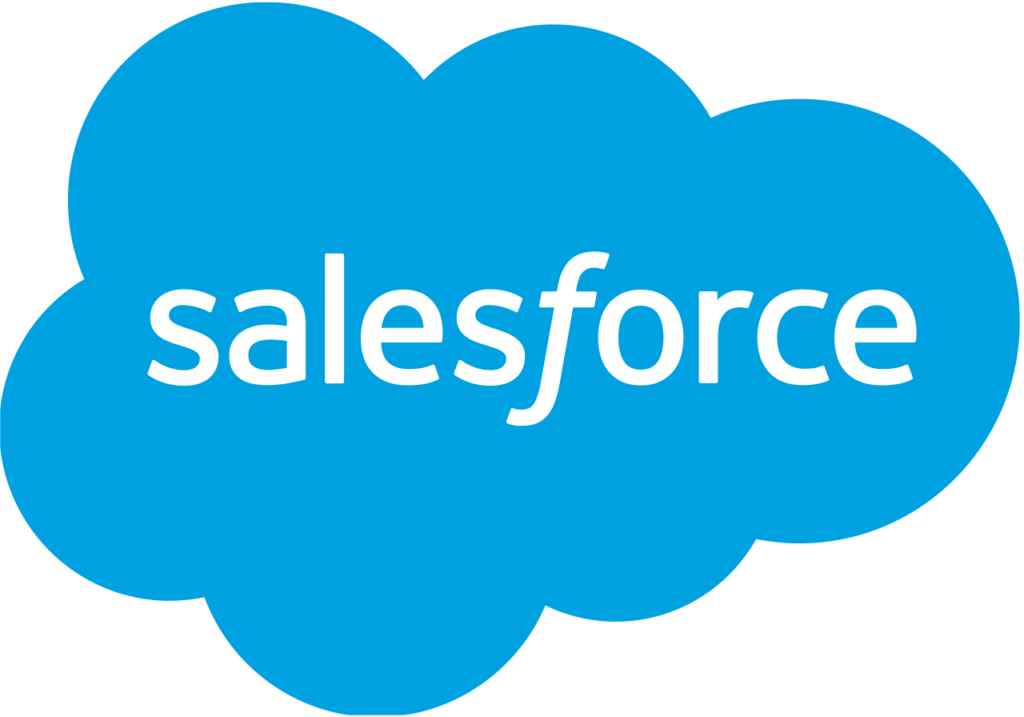
Salesforce, a leader in customer relationship management (CRM) software, effectively used social media to promote and engage audiences around its annual Dreamforce conference. Through a mix of live tweets, event updates, and user-generated content, Salesforce created a buzz on platforms like X and LinkedIn, enhancing event attendance and participation.

Lessons Learned
Salesforce’s strategy highlights the effectiveness of event-based social media campaigns. By creating excitement and a sense of community around an event, they were able to engage both attendees and the broader audience, amplifying their brand presence.
Future Trends in SaaS Social Media Marketing
In the ever-changing world of SaaS social media marketing, staying ahead means keeping an eye on emerging trends. We’re seeing a surge in the use of artificial intelligence and machine learning, which is revolutionizing how we create personalized and impactful marketing campaigns.
Moreover, video content, particularly short-form videos, is becoming a staple, thanks to platforms like TikTok and Instagram Reels. These formats are perfect for showcasing software features and sharing customer stories in an engaging way. Interactive content like polls, quizzes, and augmented reality experiences are also on the rise, offering new ways to captivate and engage audiences. Plus, with social commerce gaining traction, SaaS companies have fresh opportunities for direct sales and customer acquisition right within social media platforms.
Additionally, keeping up with the latest platform features and marketing tools can open up new avenues for engagement. A flexible content strategy that can adapt to recent trends and audience feedback will keep your campaigns fresh and relevant.
Continuous learning and training for your team ensure they’re equipped with the latest skills and insights. And don’t forget the power of experimentation – trying out new approaches and technologies can lead to exciting discoveries and keep your social media strategy sharp and effective.
Conclusion
By embracing the proven tactics we’ve covered in this article, your SaaS business can build a strong online presence, foster meaningful connections with your audience, and drive growth in an increasingly competitive digital world. But we understand that tackling SaaS social media marketing can be a complex task, and you don’t have to go at it alone.
At NUOPTIMA, we’re here to help streamline and enhance your efforts. Our team is well-versed in the latest trends and techniques, ensuring your strategies are both effective and up-to-date. We focus on real results – improving engagement, expanding your reach, and increasing your ROI. With our expertise in analytics and content strategy, we can help you build a stronger, more profitable social media presence.
Interested in taking your social media marketing to the next level? Book a call with NUOPTIMA today so we can collaborate to create a strategy that not only connects with your audience but also drives real growth for your business.
FAQ
Attracting customers to SaaS involves a combination of targeted marketing strategies, including SEO to improve online visibility, content marketing that addresses specific customer pain points, and leveraging social media platforms for brand awareness and engagement. Offering free trials or demos and showcasing customer testimonials can also be effective.
SaaS in social media refers to using social media platforms to market and promote software products. This involves creating and sharing content that resonates with potential customers, engaging with users, and running targeted ad campaigns to increase brand awareness and drive sales.
Promote your SaaS on social media by sharing engaging content like how-to guides, case studies, and product demos. Utilize paid advertising for targeted reach, engage with your audience through comments and messages, and leverage influencer partnerships to expand your reach. Regularly analyze your performance metrics to refine your strategy.
The best social media platform for SaaS depends on your target audience and product type. LinkedIn is highly effective for B2B SaaS due to its professional user base, while platforms like Facebook and Instagram can be better for B2C SaaS products. X and YouTube are also valuable for brand visibility and content distribution.
Yes, Facebook ads can be effective for SaaS, especially for reaching a broad audience and for B2C SaaS products. They offer advanced targeting options, allowing you to get specific demographics, interests, and behaviors. The success of Facebook ads depends on the ad’s content, targeting precision, and continuous performance monitoring.

